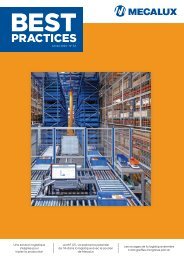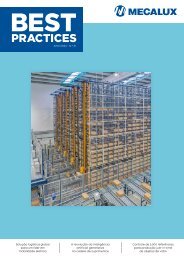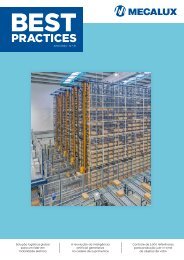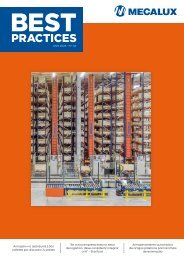Create successful ePaper yourself
Turn your PDF publications into a flip-book with our unique Google optimized e-Paper software.
Case Study I Takeda<br />
Turnkey warehouse<br />
Takeda wanted all development and construction<br />
phases of the warehouse, including<br />
the supply of the software needed to<br />
properly manage all internal operations,<br />
carried out by a single company.<br />
That is why Mecalux was commissioned to<br />
run the turnkey project from beginning to<br />
end.<br />
Stages of warehouse implementation:<br />
- Land preparation via pilings: due to<br />
the low bearing capacity of the soil, and<br />
the large static demands, a deep foundation<br />
was made on pilings.<br />
- Installation of a reinforced concrete<br />
foundation slab: first a reinforced top<br />
and bottom was built with steel rods, and<br />
subsequently the ground was filled with<br />
concrete.<br />
- Finish: the foundation was finished and<br />
hardened with the objective of obtaining<br />
dust free paving.<br />
- Rack assembly: regarding clad-rack<br />
warehouse, the racks themselves make<br />
up the actual structure.<br />
- Assembly of warehouse cladding:<br />
in clad-rack warehouses wall panelling<br />
and ‘sandwich type’ roofs are fastened<br />
directly to the rack structure. In Takeda’s<br />
case, and having used an inerting system,<br />
it was necessary for the outside cladding<br />
to be as watertight as possible.<br />
- Introduction of maintenance teams:<br />
conveyors and stacker cranes were<br />
assembled inside the warehouse.<br />
56 <strong>Best</strong> <strong>Practices</strong>

















